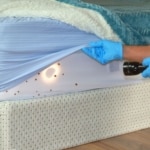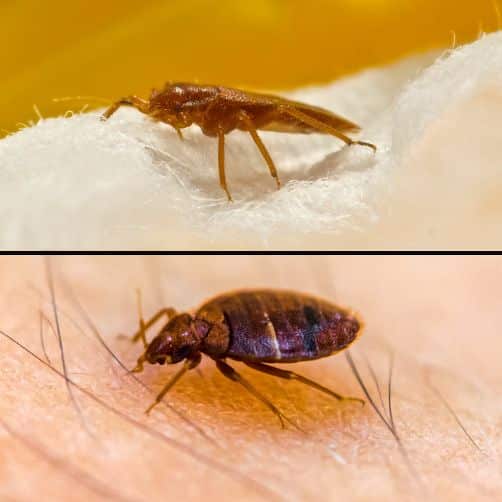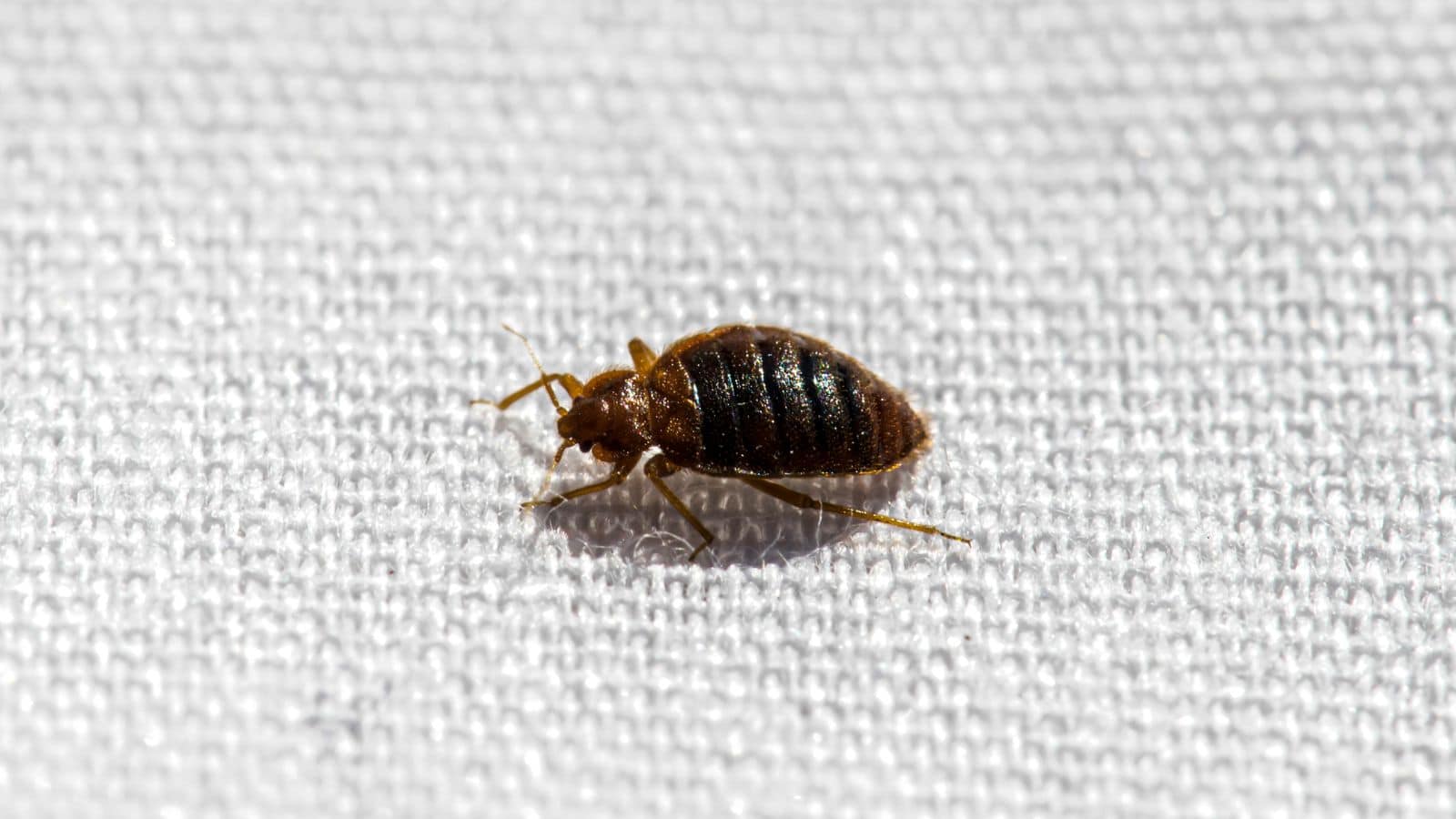Are you waking up with itchy, red bumps or bites on your body? You may want to consider bed bugs. They are small insects that feed on human blood, typically while we’re sleeping. They are somewhat flat, but when they are engorged, their bodies become tubular. These bugs can survive long periods of time without feeding. In the right conditions, they have been known to go more than 6 months without food. They can carry pathogens, but it has not been proven that they can transmit them to humans. The main health concern is scratching caused by irritation of the bite.
Unlike many other pests, these bugs do not enter your home or business from outside. They are carried to new locations on people or things such as backpacks, luggage, or anything that has been sitting in a place with an active population.

Identification
Adult bed bugs are reddish-brown and oval-shaped. They are about 3/16 of an inch long, which is about the size of one or two grains of rice. Juveniles have the same shape but may be more yellowish to brown. They molt as they grow, so you may see old skins. When they are newly hatched, they are nearly translucent until they feed. The eggs are white, oval shaped, and pinhead sized.

Signs of Infestation
The main sign of an infestation is seeing the bed bugs themselves. Other signs to look for include tiny, ink blot-like spots that begin to appear on places where you sit or lay for long periods of time. These spots are their feces. Also look for skin sheds or clusters of eggs. In locations with a very high population, there may be a distinct, musty smell.
What Attracts Bed bugs
- The smell of humans -- we are their food
- Our body warmth
- The carbon dioxide we exhale
How To Prevent an Infestation
- Check bedding and furniture when traveling
- Only allow people and things that you trust to enter your home
- Bed bug shield treatments can prevent future infestations



